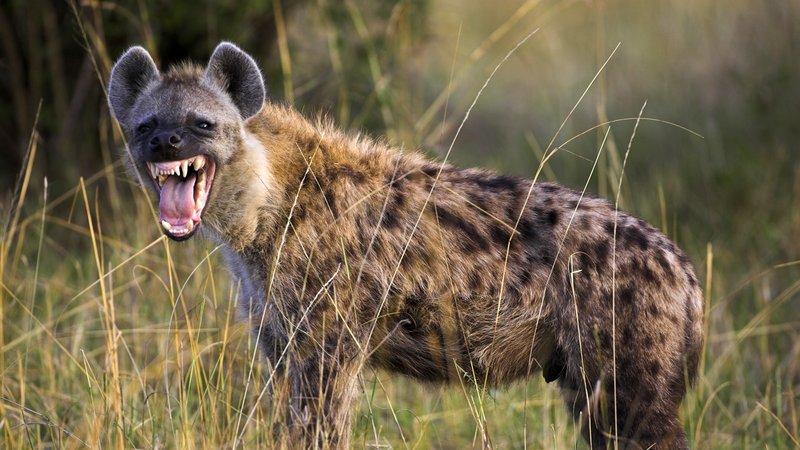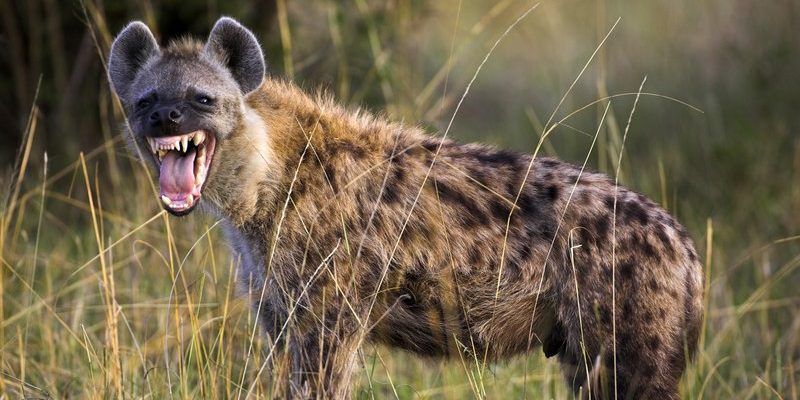
Imagine a bustling restaurant kitchen. Each chef has a role, whether they’re grilling, chopping, or cleaning up the mess at the end of the night. The spotted hyena plays a similar part in its ecosystem, ensuring balance and health. They might not be the stars of the show, but they’re essential for keeping everything running smoothly. Let’s dive into the fascinating world of the spotted hyena and explore how this incredible animal contributes to its environment.
Understanding the Spotted Hyena
The spotted hyena (*Crocuta crocuta*), often maligned in popular culture, is a complex and social animal. Unlike the solitary image many hold of them, these creatures thrive in clans that can consist of up to 80 members! Think of them as little communities of tightly-knit families where cooperation is key.
Their social structure is matriarchal, meaning the females dominate the hierarchy. This is quite different from many other carnivores, where males often take the lead. The females, being larger and more aggressive, not only lead but also take care of the young and hunt for food. This unique social system enhances their hunting success and enables them to take down prey larger than themselves—sometimes even competing with lions!
Additionally, spotted hyenas are incredibly adaptable creatures. They can thrive in various environments, from grasslands to woodlands. Their versatility is a testament to their evolutionary success, allowing them to play a vital role in different ecosystems.
Grazing and Hunting: Nature’s Cleanup Crew
You might be wondering: “How do spotted hyenas fit into the food chain?” Well, their role as both hunters and scavengers makes them essential in controlling prey populations and cleaning up the environment. Think of them as nature’s cleanup crew.
Hyenas are highly skilled hunters. They often hunt in packs, coordinating efforts to chase down animals like wildebeests or impalas. Interestingly, their hunting success rate is quite impressive. It often rivals that of lions, especially when they hunt larger prey like buffalo.
But that’s not all. Spotted hyenas are also expert scavengers! They often follow predators like lions to feast on leftover kills. This scavenging helps prevent disease spread by cleaning up carcasses that would otherwise rot and become breeding grounds for pathogens. So, every time a hyena snags a meal, it’s doing a favor for the entire ecosystem.
Competition with Other Predators
In the animal kingdom, competition is fierce, and the spotted hyena often finds itself in the thick of it. You might picture them as the lone wolf, but in reality, they must navigate a world filled with strong competitors like lions and leopards.
While lions are often seen as the “kings of the jungle,” hyenas aren’t afraid to challenge them. They often steal kills from lions, employing their numbers for a successful takeover. This competitive relationship keeps lion numbers in check, which is vital for maintaining balance within the ecosystem. If one species dominates too much, it can lead to significant population crashes of prey animals.
Interestingly, this competition results in diverse predator dynamics. By keeping each other in check, both lions and hyenas contribute to a balanced food web. This balance is crucial for the survival of many species in the savanna.
The Hyena’s Impact on Landscape and Biodiversity
You might not have thought about it, but the presence of spotted hyenas actually influences the landscape itself and biodiversity. By controlling herbivore populations, they help manage vegetation levels in their habitat.
For example, when hyenas hunt and keep herbivore populations in check, it prevents overgrazing. This, in turn, allows various plant species to thrive, which supports a rich diversity of flora and fauna. The more diverse the plant life, the more animals it can support, creating a healthier ecosystem overall.
Moreover, their scavenging habits add nutrients to the soil. When they consume carcasses, their waste contains essential nutrients that enrich the environment. This nutrient cycle is a fundamental part of ecosystem health, promoting plant growth and sustaining other wildlife.
Social Structure: Cooperation and Communication
As social creatures, spotted hyenas exhibit fascinating behaviors that enhance their survival. Their complex social interactions involve vocalizations, body language, and even facial expressions. It’s like they have their own secret language!
Hyenas communicate with each other using whoops, grunts, and laughs to convey different messages. For example, they might “laugh” when they’re excited or communicating during a hunt. This cooperation is crucial, especially when hunting or defending territory.
Their strong social bonds also mean they often share food and take care of one another, especially the young. This teamwork not only ensures the clan’s survival but also enhances their hunting success. You could say that in the wild, a hyena’s strength truly lies in its community.
Conservation Status and Challenges
Despite their importance, spotted hyenas face numerous challenges in the wild. Habitat loss due to human encroachment and climate change threatens their populations. With fewer habitats, they struggle to find food and space, leading to competition with other species.
Additionally, misconceptions about hyenas lead to negative attitudes towards them. Many people view them as dangerous or undesirable, which can hinder conservation efforts. Education and awareness are essential for improving their image and promoting their role in ecosystems.
Supporting conservation initiatives that protect hyenas and their habitats is crucial. By doing so, we can help maintain the balance of the ecosystems they inhabit and ensure that this critical species continues to thrive.
The Future of Spotted Hyenas
Looking ahead, the future of the spotted hyena is uncertain, but it’s not set in stone. By understanding their role in the ecosystem, we can appreciate their significance and advocate for their protection. These creatures are not just scavengers; they’re important players in a delicate balance.
Encouraging wildlife tourism and responsible conservation practices can help raise awareness and funds to support hyena conservation. Imagine being able to witness these remarkable creatures in their natural habitat, playing their crucial role in the ecosystem. It could inspire a new generation of wildlife enthusiasts and conservationists.
In conclusion, the spotted hyena is more than just a fascinating creature; it’s a fundamental part of its ecosystem. By understanding their role and advocating for their conservation, we can help ensure that these remarkable animals continue to thrive for years to come. So, next time you think of the savanna, don’t forget about the spotted hyena—it’s a key player in nature’s grand story!

